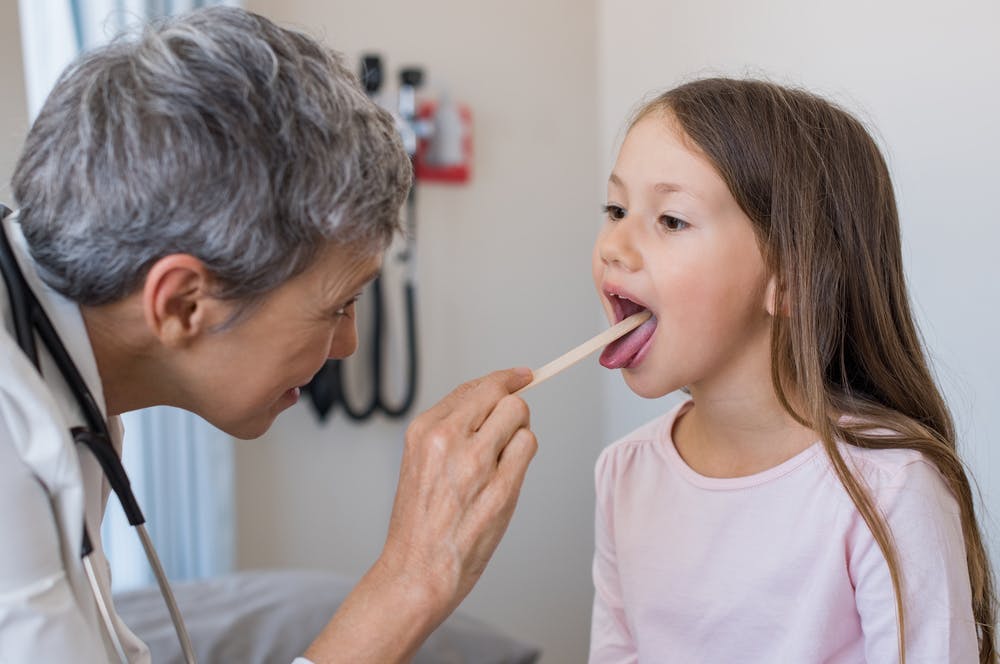Effective heat rash treatment and prevention
With warmer weather upon us, you’re probably itching to get outside more often. But with exposure to heat and sunlight, there is a risk of heat rash and other warm weather-related ailments, like sunburn, dehydration, heat cramps, heat exhaustion, heat stroke, and summer allergies.
You may be especially susceptible to heat rash if you’re engaged in intense physical activity that makes you sweat. To prevent injury or heat rash, it’s important you take precautions to protect yourself and your family.
How do you know if your rash is a heat rash? And, if it is, how can you get rid of heat rash quickly?
What is heat rash?
Given that your skin is the largest organ in your body, it’s not surprising that many different skin rashes exist and it can be difficult to identify what type of rash you have. Heat rashes (also known as miliaria) are one of the most common types of rashes, affecting both children and adults.
Heat rashes form when your sweat glands become clogged and can’t expel sweat, thus trapping perspiration under your skin. They are most commonly experienced among people who live in humid, hot climates and individuals who sweat frequently.
Heat rashes usually appear in skin folds or areas where clothes cause friction. For children, this is often in the neck, shoulders, or chest areas, whereas adults more typically develop heat rashes in the armpits, elbow creases, and groin. They can appear several hours or even a few days following sun or heat exposure.
What does heat rash look like?
The rash can look differently depending on skin type, but generally, it will have some of these similar characteristics:
- Areas of the skin that feel like they’re burning
- Clusters of small bumps or blisters that have a halo around them
- Raised or rough areas on the skin
- Red patches that are itchy
4 Types of heat rash
If you’re looking for a sure sign of how to identify a heat rash, unfortunately, there isn’t one. That’s because there are different types of heat rashes, which range in severity from superficial blisters to deep, red lesions.
To determine what type of rash you might have, be on the lookout for the following heat rash signs and symptoms.
1. Miliaria crystallina
Miliaria crystallina is the mildest form and affects the sweat ducts on the epidermis or top layer of skin. If you have miliaria crystallina, you’ll notice small clear or white bumps filled with fluid that can easily break. Despite popular belief, this type doesn’t itch and shouldn’t cause discomfort. It’s most common in babies.
2. “Prickly” heat rash
This rash is also called miliaria rubra and is known to be more painful than miliaria crystallina because it occurs deeper within the epidermis. This type causes red bumps, an itchy or prickly sensation, and decreased sweating in the affected area. It can also result in inflammation and soreness of the skin since the body can’t release sweat through the skin’s surface. It’s more common in adults than in babies and children.
3. Miliaria pustulosa
Miliaria pustulosa is similar to miliaria rubra, except the red bumps associated with the heat rash fill with pus, forming lesions and causing them to become inflamed and pustular, or pus-filled.
4. Miliaria profunda
Miliaria profunda is the least common form and affects the dermis or a deeper layer of skin below the epidermis. Sweat from your sweat glands is retained in your skin, forming larger, flesh-colored bumps. This type usually occurs in adults after a long period of physical activity and can reoccur or become chronic.
Heat rash treatment
How long does heat rash last, and what is the best heat rash treatment? The best method will depend on what area of your body is affected.
Typically heat rash will resolve on its own within a few days. However, there are some things you can do at home to help alleviate a visible rash.
For instance, if your rash is itchy, you can apply an over-the-counter anti-itch cream to small spots, like hydrocortisone. This may be especially helpful in areas like the underarm, behind the knee or in skin creases that get more irritated. Applying aloe vera topically is another well-known remedy for skin rashes.
A cool bath or shower may help with all-over itchiness. Or, if the rash is more localized, you can apply a cool compress to a particularly itchy area. If you lay in the bathtub for a while, consider adding colloidal oatmeal, as this has been shown to help calm irritated skin.
Additionally, lower the temperature of your environment whenever possible, by doing things like keeping the air conditioning on or turning on an extra fan in your bedroom. Wear loose-fitting clothes that don’t stick to sweat and further trap heat against your skin.
Heat rash treatment also means not making an existing rash worse by irritating it further. Don’t scratch too hard or pick at blisters, as this makes them stick around longer. As your rash begins to heal, you can use a moisturizing lotion to help calm the skin.
How to get rid of heat rash quickly?
The best way to get rid of a heat rash quickly is to ensure the affected area is kept cool and dry. Avoiding exposure to the heat that caused your rash can expedite healing as well. It is important to note that taking a warm or hot shower will make the symptoms worse!
If you’re experiencing prickliness or itching, creams like calamine lotion can help relieve discomfort and prevent complications. Other homeopathic substances, including colloidal oatmeal, sandalwood powder, baking soda, aloe vera, and Epsom salt, can also soothe itchiness.
For more serious instances of inflammation caused by a heat rash, your healthcare provider might prescribe a topical steroid.
How long does a heat rash last without treatment?
For most people, heat rash will generally go away on its own without treatment within a few days. However, how long your rash lasts can depend on factors like where it’s located on your body, how severe it is, and whether you’re using home remedies to help alleviate some of the symptoms.
Baby heat rash treatment
Adult heat rash is slightly different than baby heat rash. Baby heat rash is caused by clogged pores that cannot clear the sweat or when a baby is too hot.
Some at-home remedies for babies include using thin cotton bedding and loose-fitting clothing, cooling the home with air conditioning or fans, and taking cool baths with no soap to help reduce the baby’s high temperature. Try using cool compresses for irritated areas of the skin and not using creams or oils on the baby’s skin.
Be sure your baby is drinking enough fluids to stay hydrated, let any excess moisture on their skin air dry, and wipe off any lotions or creams that have been used.
Preventing heat rash
Implementing heat rash prevention methods is the best way to avoid this annoying skin condition in the warmer months. First, stick to more breathable clothing made from cotton and moisture-wicking fabrics. Choose cool, breathable bedding and clothing you might wear at night.
When the weather is hot and humid, stay in the shade or air conditioning and keep your sleeping area cool and well-ventilated. Avoid thick ointments and lotions that can clog your pores; instead, opt for a lighter moisturizer during the summer months. Body soaps that contain dyes or fragrances can also dry out the skin, making heat rash worse. The important thing to remember is all heat-related illnesses are preventable.
Get expert medical care at an urgent care center
In most cases, heat rashes will clear up on their own within days. However, you should see a healthcare provider if your rash gets worse or you notice signs of infection. This can include:
- Fever or chills
- Golden yellow crust formation or pus draining from lesions
- Increased swelling, pain, redness, or warmth around the affected area
- Swollen lymph nodes in the neck, armpit, or groin
Not sure if your skin irritation is a heat rash or something more serious? We are here to help. To get started, find the urgent care center nearest you, then walk in or save your spot online. We can evaluate your rash and provide the best treatment options to help you feel better sooner.
References:
https://www.ncbi.nlm.nih.gov/books/NBK537176/
Written by Sarah Thebarge, Physician Assistant on July 17th 2024


